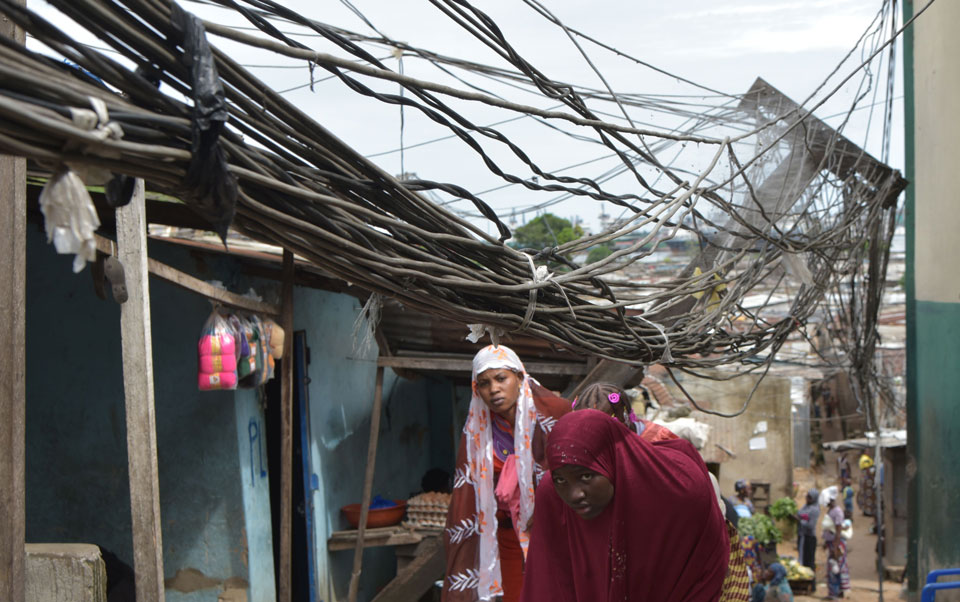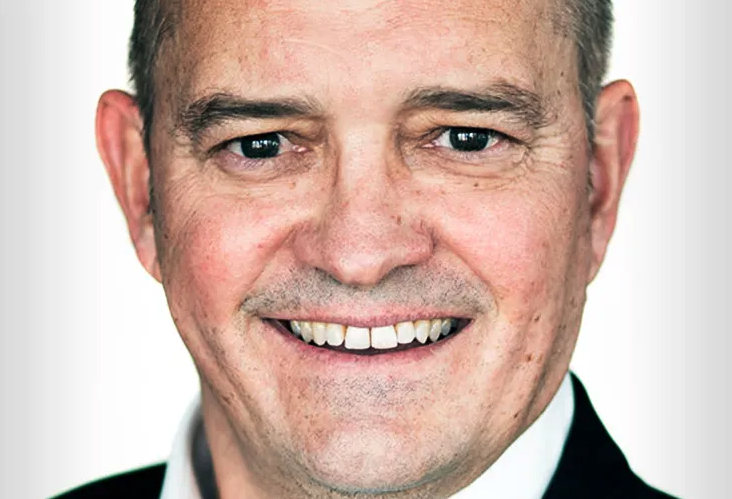While the need for more social financing in emerging markets is a constant theme at meetings such as COP, for development projects on the ground, trying to raise finance to develop infrastructure and facilities remains particularly challenging.
Jump to:
It is not easy to attract funding for low-income households when repayments are unlikely to stick to the regular schedule that financial institutions usually demand.
In West Africa, securitization is proving a useful solution to secure more financing from the private sector for development.
In Côte d’Ivoire, the largest economy in the West African Economic and Monetary Union (WAEMU, also known by the French acronym UEMOA), the regulatory framework around securitization was introduced in 2010. But the number of deals has grown recently.
“The perception of securitization in the region has really changed over the last decade,” says Olivier Gui, managing director at ALC Titrisation.
ALC Titrisation is an arm of investment bank Africa Link Capital (ALC). It was set up in 2015.
“When we first started, it took more than three years before our first securitization,” Gui says. “Now people are asking a lot more about securitization and whether it can work for their funding need.”
Securitization has been used to bring more liquidity to the small and medium-sized enterprise sector in the region. Local banks are generally reluctant to lend to SMEs because of their size, limited experience and undocumented performance. Securitizing such loans has made the risk more palatable to investors.
In 2018, regional West African SME bank Compagnie Financière Africaine Group (Cofina) securitized SME loan receivables from its Senegal and Côte d’Ivoire operations in a CFAFr10 billion ($16 million) bond issuance on the WAEMU regional stock exchange. The bond had a tenor of 18 months and an interest rate of 7.5%.
In 2020, NSIA Banque Côte d’Ivoire followed suit with a much larger securitization of SME loans, issuing a five-year CFAFr40 billion bond at 7% on the regional exchange.
Social securitization
The most recent securitization issuance is a secured social bond issued by the government-led Electricity for All Programme (PEPT) in Côte d’Ivoire. It could set a blueprint for similar social deals elsewhere.
The CFAFr60 billion bond is the first social asset-backed security in the region and has raised funds to extend access to electricity to 800,000 low-income households over the next four years.
The bond consists of three tranches, including a CFAFr25 billion tranche, a seven-year tranche with 7% coupon; a CFAFr15 billion, 10-year tranche at 7.25%; and a CFAFr20 billion, 15-year tranche (the longest tenor of any bond in the region).
What is unusual about this deal is the underlying assets. These are not typical receivables on a specified repayment schedule. Instead, it is a securitization of pay-as-you-go (PAYG) receivables, which builds a lot of uncertainty into the repayment timeline.
The use of PAYG contracts is an essential part of PEPT’s work. It ensures the affordability of the electricity provided to low-income households but makes funding the scheme much more difficult.
The bond’s long maturity and the quality of the PAYG receivables would have been a tough sell for traditional bank lending. Securitization enables the issuer to tap into a new pool of investors using a structure that makes the risk palatable for them.
Low-income households in rural areas are not necessarily going to be able to repay the whole loan in less than 10 years
Harris Hounton, IFC

“This structure is very replicable,” says Harris Hounton, senior investment officer at the IFC, a co-anchor investor on the bond. “Once you open the door and you know how to structure this type of transaction, then it opens up a lot of opportunities.”
The framework could be replicated with the same development goals of access to electricity in other countries in the region, such as Senegal or Togo.
It could also easily be adapted using, for example, mortgage receivables for an affordable housing scheme or phone and broadband receivables to increase digital inclusion.
The social bond will help to finance last-mile connections for unserved households in localities in Côte d’Ivoire where there is electricity. This may involve connecting a village where there is electricity access on the main roads, but it does not extend to smaller side streets or for those without connections in larger urban centres such as Abidjan.
PEPT has previously funded these connections through the public purse. But to continue the efforts past its initial targets and to help reduce the public financing burden, it needed new funding options.
And this is where the real benefits of the securitization came in. The PAYG repayment scheme is an important part of ensuring the affordability of electricity access for the households in the PEPT scheme. It provides them with flexibility to pause payments or stop paying altogether if necessary. The only consequence of this to the customer would be that they lose access to electricity for as long as they don’t pay.
This flexibility understandably makes turning the contract receivables into collateral very challenging.
“We would historically finance a project like this through typical bank loans,” says Hounton. “But the type of client and very long tenor would be very challenging for commercial banks to take on.”
But securitizing these contract receivables enabled PEPT to offer a viable investment by overcollateralizing and setting the tenors of the bonds at longer maturities than the loan contracts (two to 10 years).
“Low-income households in rural areas are not necessarily going to be able to repay the whole loan in less than 10 years,” says Hounton. “Some may take 11 or 12 years to fully pay off the loan, so the structure needed to be overcollateralized to be bankable.”
Structuring the PAYG element to ensure the affordability of the electricity was also very important for enabling the product to be classified as a social bond, according to Teresa Pinheiro, associate sustainable finance lead analyst at Moody’s, which provided the second-party opinion for the social bond.
Finding the right structure
Coming up with this solution was not straightforward.
“There were so many challenges I don’t know where to start,” jokes Gui at ALC Titrisation.
ALC Titrisation managed the securitization special-purpose vehicle while ALC Structuration, another arm of Africa Link Capital, acted as arranger on the bond.
ALC had worked on securitizations before, but this was the first with such a long maturity and involving the social aspect.
The overcollateralization was key. The issuance size of CFAFr60 billion is backed by a portfolio with an estimated value of CFAFr99 billion, according to credit rating agency GCR Ratings, which provided the credit report on the bond.
Added to this pool of loans are operational margins and royalties worth a total of CFAFr20.2 billion, making the total pool of assets backing the bond almost double the value of the bond itself at CFAFr119.2 billion.
From a credit perspective, the bond has the right layers
Folatomi Fayemi, Ninety One

Such a high overcollateralization ratio of 98.7%, alongside the potential extension of a liquidity line from NSIA Banque CI, which also acted as depositary on the deal, meant the team was able to put together a structure that could withstand stress testing and was ratable.
The three tranches of the bond were rated at AA-(WU)(SF)(IR) for the seven year, A+(WU)(SF)(IR) for the 10-year bond and A(WU)(SF)(IR) for the 15-year tranche.
Another issue was regulatory risk.
As electricity is a regulated sector, a change in energy policy could heavily impact the receivables projections that the structure and repayment calculations are based on.
The team had to work with the government of Côte d’Ivoire to ensure that if there was a new government and energy policy changed, it would not impact bond payments.
“We needed to make sure that if anything changes – the government, the PEPT project, the government’s priorities, energy tariffs, or the overall framework that enables us to predict PEPT’s cash flows over the 15 years – then investors would not see their investment jeopardized,” says Hounton.
It took three years for the team to turn the PAYG electricity receivables into a commercially viable secured social bond.
“From a credit perspective, the bond has the right layers,” says Folatomi Fayemi, investment specialist at fund manager Ninety One, which manages EAIF, an anchor investor in the bond. “It has a very high over-collateralization ratio. On the social impact side, the Moody’s independent review verified it’s in line with best-in-class standards and CIE [Compagnie Ivoirienne d’Électricité] is a very strong independent state utility in Côte d’Ivoire.”
CIE is the national utility that manages the connections to the grid under the PEPT scheme. It is only 15% owned by the government of Côte d’Ivoire, however it has implicit government support.
Replicable
The real opportunity now lies in the other uses to which the bond can be put.
A key goal for the team was to help develop capital markets in the region so that there is sufficient liquidity for similar bond issuance. Developing private-sector financing is crucial due to stretched public finances and low public reserves in many countries.
The team presented the structure at the Africa Financial Industry Summit in November, where they reported healthy interest.
“The room was packed out, and a few people came up to us afterwards interested in the structure,” reports Hounton.
And there are plenty of theoretical use cases.
The most concrete is an expected follow-on issuance from PEPT to finance its goal of connecting all households living in electrified localities to the grid by 2025. That bond, currently in the works, is expected to raise another CFAFr60 billion.
A copycat deal could boost electricity access in other countries in the region, such as Senegal and Togo.
Within the WAEMU, Senegal and Côte d’Ivoire have so far had the greatest success in expanding access to electricity. Senegal has 68% of the population connected, while Togo and Mali have 55% and 53% respectively.
At the opposite end of the scale, Burkina Faso only has 19%, while Niger has 18.6%.
The securitization format could also be applied to other sectors, such as affordable housing, transport, water supply and telecoms – any sector where an upfront cost is a barrier to access for low-income households.
“If anything, taking this to a new sector would be more straightforward because it wouldn’t require as much government involvement as a product in the energy sector,” says Hounton.
Government involvement certainly added complexity to the PEPT deal. In other sectors, which are not regulated, finalising the terms would be much more straightforward.
Key ingredient
The key ingredient for adoption is investor appetite. The investor base for securitization in the region remains in its infancy, with development funds taking up most of the allocation.
For PEPT’s social bond, the IFC and the Emerging Africa Infrastructure Fund (EAIF), managed by Ninety One, acted as co-anchor investors.
IFC and EAIF committed to take on a minimum of 62% of the book, rising to 100% depending on the level of interest from other investors.
In the end, the two anchor investors were allocated 80% of the bond, CFAFr48 billion. IFC invested CFAFr30 billion, taking on 50% of the total volume, with EAIF investing CFAFr18 billion for 30%.
Of the remainder, half was taken by a London-based investment firm active on securitization deals in West Africa, while the remaining 10% was allocated to local investors. This was split with 86% of that coming from retail participation and 14% from institutional investors.
In the earlier NSIA Banque CI securitization, most investors had come from outside the region, with only one third coming from Africa and two thirds from the US, Switzerland, France and the UAE.
The main investors in securitizations from Côte d’Ivoire have traditionally been insurance companies, trust funds and pension funds, with 80% of investors institutional and 20% retail. Some 71% come from the WAEMU region and 29% come from elsewhere in the world, according to data from ALC Titrisation.
“Regional institutional investors are not so used to the mechanism of securitization,” says Eliane Alangba, director general at BOA Capital Securities, who acted as a co-lead manager of the bond placement syndicate on the PEPT deal, alongside NSIA Finance. “These investors often invest in sovereign bonds, so when you talk about corporate bonds, social bonds and securitization, they’re not as familiar with it.”
Alangba and her team spent a lot of time responding to questions from institutional investors on PEPT’s management of the receivables and the quality of the receivables.
“We had to do a lot of back and forth to convince them to subscribe,” she explains.
As more deals come to the market, investor interest will likely grow for these social securitized offerings. Developing regional investor interest will be the key to replicating the product in future.
What is PEPT?
PEPT was set up by the government of Côte d’Ivoire in 2014 to expand access to electricity to low-income households that cannot afford to pay to up-front to have their house connected to the grid.
Under the programme, the household pays an upfront cost of only CFAFr1,000 ($1.67), compared with the full cost of CFAFr149,000. The difference is funded by PEPT and paid back by the customer through the pay-as-you-go (PAYG) scheme over a period of two to 10 years, depending on the customer’s contract.
The programme has so far been very successful. When it was established, the goal was to reach a million new connections to the grid by 2020. It reached this target and, by December 2022, had facilitated more than 1.5 million connections.
That has made an impact to electricity access in Côte d’Ivoire. In 2011, only 55.8% of the country’s population had access to electricity, according to World Bank data. By 2021, the most recent year with published data, that had grown to 71.1%.
This change has mostly taken place in rural areas. In 2011, only 26.3% of the rural population had access to electricity. This almost doubled to 45.2% by 2021.
Access to electricity in urban parts of Côte d’Ivoire is much higher, at 94.9% in 2021.
This sharp rise in electricity use has been driven by three government programmes: a scheme to reduce electricity tariffs for low-income households by 20%; a scheme to electrify all very large households; and the PEPT scheme, which focuses on connecting unserved households in electrified localities to the grid.




